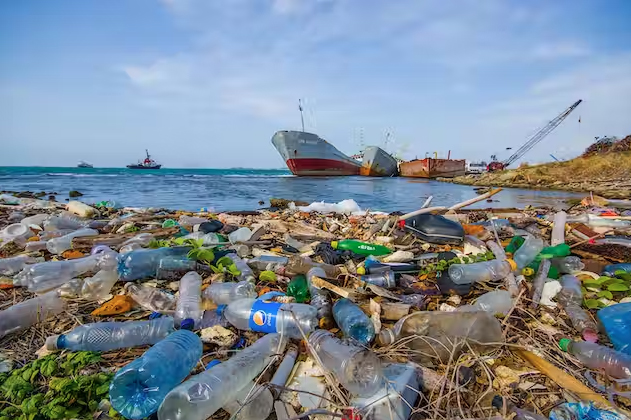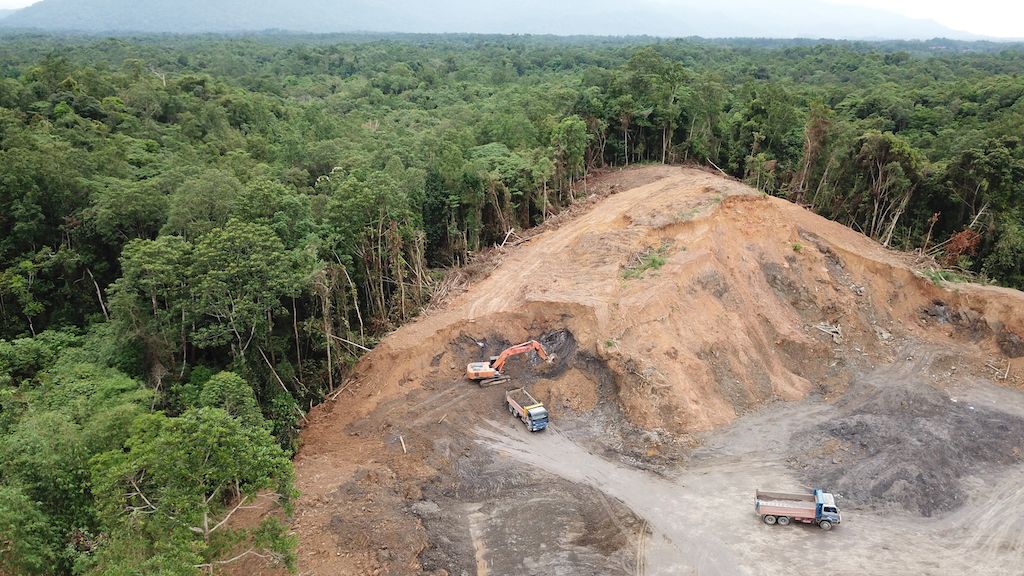Earth is the only planet in the universe where life exists, though, on Mars, there is only a possibility of it since a water-like substance is felt there. Whatsoever, the dimensions and the natural resource budget of the earth are fixed?

In his quest for survival and development, man has been harvesting the earth’s resources unmindful of the fact of the limited budget. Thus, over-harvesting them. Resultantly, damaging and threatening the environment. The environmental threats facing the earth are so great and universal that no country or a group of countries or societies can hope to tackle them alone. Therefore, we have no option but to work together to forge a global partnership.
We now realize that unless development is guided by environmental, social, cultural, and ethical considerations, it will not have desired benefits, or it will miserably fail. If we develop fast beyond sustainability, problems of environmental degradation like pollution and soil erosion will go beyond control. On the other hand, if we do not develop, we are bound to confront serious problems of sanitation and unhygienic conditions, thus the closely linked issue.
If the basic human needs are not met adequately, the resource base of the life-support system will get erased fast. We are confronted with the issues of pollution, loss of forests, soil productivity, biodiversity apart from malnutrition, poverty etc.
The environment does not recognise political boundaries. It is only the MAN that has made its territory unmindful of the fact that neither other living organisms nor the non-living components of the earth planet recognise the “yours and mine” mindset. If in one part of the earth or state or village or for that matter a dwelling unit, something goes wrong, the neighbouring area(s) will also be affected – maybe more or less.

History of global attention to the Environment
It was for the first time in the history of the earth, that in 1968 the government of Sweden pleaded with the United Nations (UN) to convene an International Conference on the problems of Human Environment. People talked about the need for a safe environment for humans. It stated that man-made changes in the natural surroundings had become an urgent problem for developed as well as developing countries. Unilaterally, these can’t be solved. Therefore, it sought international cooperation. These talks influenced even the parliamentary elections there in 1970.
The UN constituted a Preparatory Committee, and through a series of deliberations in the UN Secretariat the UN for the first time in 1972 proposed the first international conference on the Human Environment to focus the attention of governments and the people on important issues of the environment addressed the general assembly of the UN endorsed the proposal and the conference was convened in Stockholm (Sweden) from June 5 to 16, 1972. In this conference focus was brought to 6 important areas – (a) Human settlements for environmental quality; (b) educational, informational, social and cultural aspects of environmental quality; (c) Natural Resource Management; (d) development and environment identification and control of pollutants of broad international significance; and (e) international organizational implications of action proposals.

The conference inaugurated by Mrs Indira Gandhi, the then Prime Minister of India on 12 June, was attended by 1200 delegates from 113 countries (including India). The outcome of the conference, popularly known as the Stockholm Declaration, 26 guiding principles which placed the major environmental issues of international concern were adopted. It led to the constructive dialogue between the industrialized and developing countries focussing on the fast pace of economic growth leading to pollution of air, water, and ocean and thus the wellbeing of humans the world over.

It made 109 recommendations and some action plans which could be grouped into 3 categories –
- a)Global Environmental Assessment Programme.
- b)Environmental management activities.
- c)International measures to support assessment and management activities carried out at the national and international levels.
The seriousness of the Stockholm Declaration can be judged by the fact that on 15th December 1972, the UN General Assembly passed the following two important Resolutions:
- Creation of the United Nations Environment Programme (UNEP) for monitoring the state of the environment apart from policymaking with science and coordinated response to the world’s environmental challenges.
- Initiated an advisory Programme called United Nations Environment Program (UNEP) under the directions of the UN. Vide this, it was resolved that the world leaders must meet every 10 years to take stock of the last decade and prepare a roadmap for the next decade.
It declared 5th June every year as World Environment Day to remind people on the only planet Earth of their duty to protect the environment for themselves and their posterity. The first World Environment Day was celebrated the world over on 5th June 1974 (Theme “only one earth”). Since then, it is celebrated every year.

The Issues demanding Global Unity
Let us look at the brass-task issues which are bothering the globe. The truth is that discussions and meetings have more diplomacy with a little sincere action at the ground level. It requires a political will overriding the hunger for the ballot.
Some of the environmental issues are local or regional or national (like air pollution, water pollution, soil erosion or depletion of the groundwater table). Although these issues are very important, they require regional/national commitment and action. I am deliberately undermining these issues for the reason of not diluting the major environmental issues (like ozone depletion, climate change, and biodiversity depletion) that require collaborative international action.
| UNEP Role:
UNEP has an advisory role. It initiated global environmental dialogue and identified issues related to the global environment through “Agenda-21”. It organised post-Rio international meetings and is assessing the successes and failures of their efforts. Fortunately, the UNEP rightly stresses on a strong bond between environment and development. It strongly considers Poverty as a major source of pollution. In 1994, it adopted the slogan “Development without destruction”. It emphasises that any strategy to increase food production must consider the need to preserve the ecological base and sustainable use of resources. |
After the Nairobi declaration, the UNEP prioritised the issues demanding global actions. No individual country or society can tackle these in isolation. We have no option but to cooperate and take collective as well as individual actions. Given the Stockholm declaration and Nairobi declaration, UNEP turned its focus more on specific issues which were approved by its Governing Council.

The UNEP has declared the following 8 priority issues inviting Global focus towards protecting our planet earth for every country to ponder and act proactively:
- Protection of the Atmosphere (combating global warming, and stratospheric ozone depletion)
- Management of freshwater resources
- Protection of ocean and coastal areas
- Protection of land resources through combating deforestation and desertification
- Conservation of global biodiversity
- Environmentally sound management of Biotechnology
- Eco-friendly management of hazardous wastes
- Protection of human health and quality of life.
To read the full article kindly subscribe to the Magazine…





